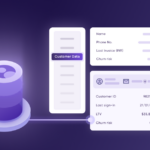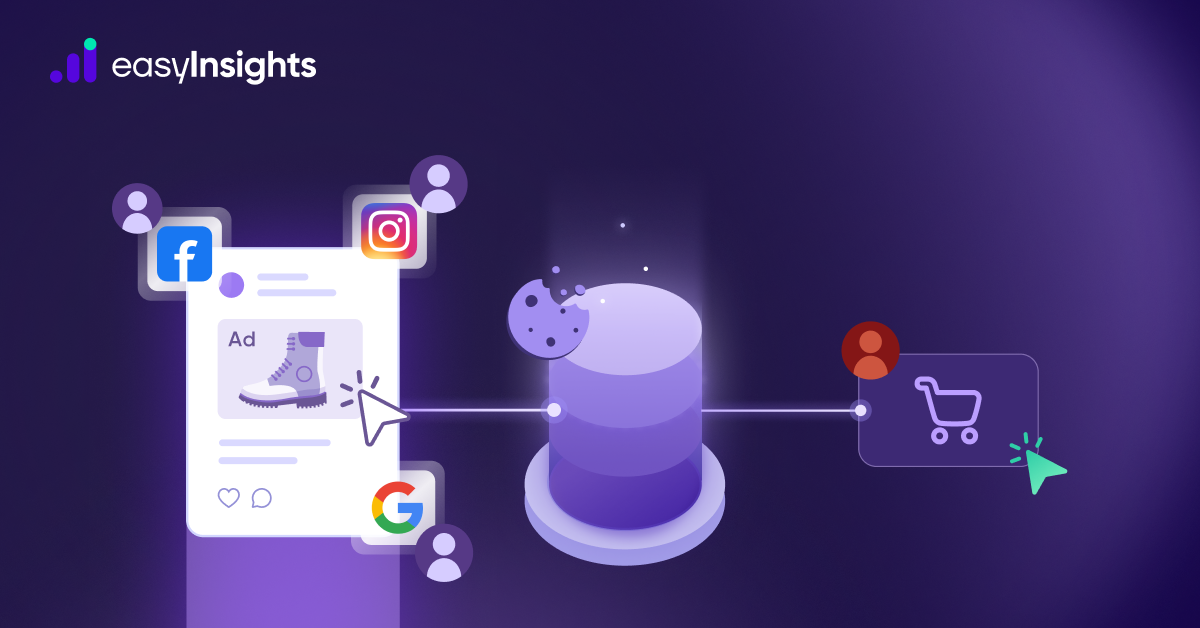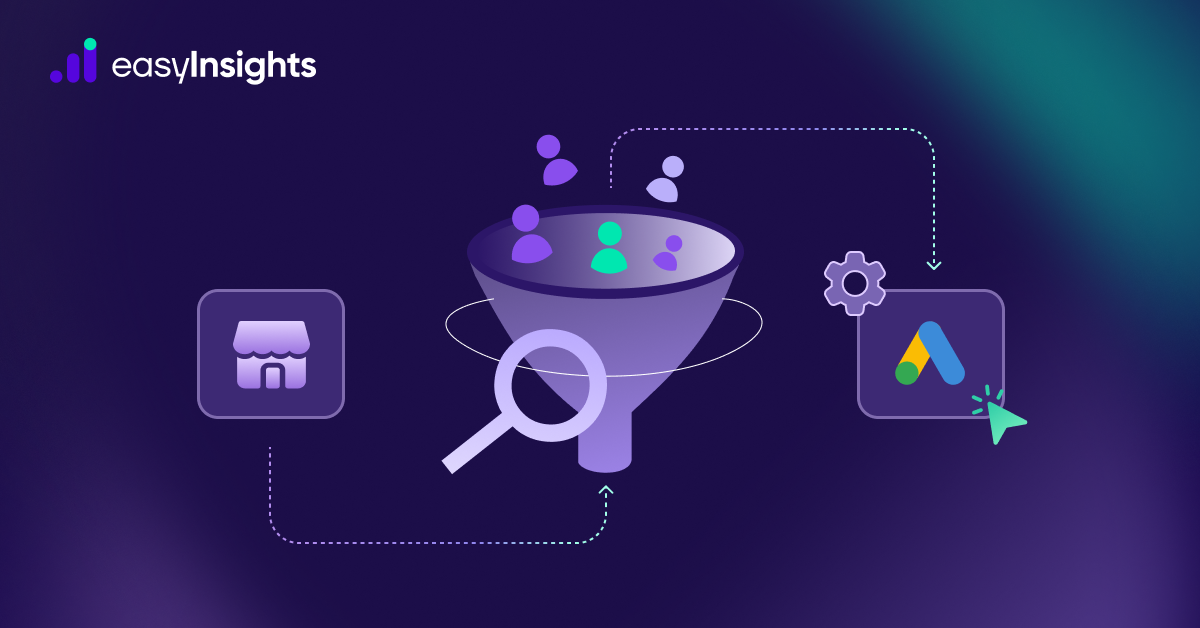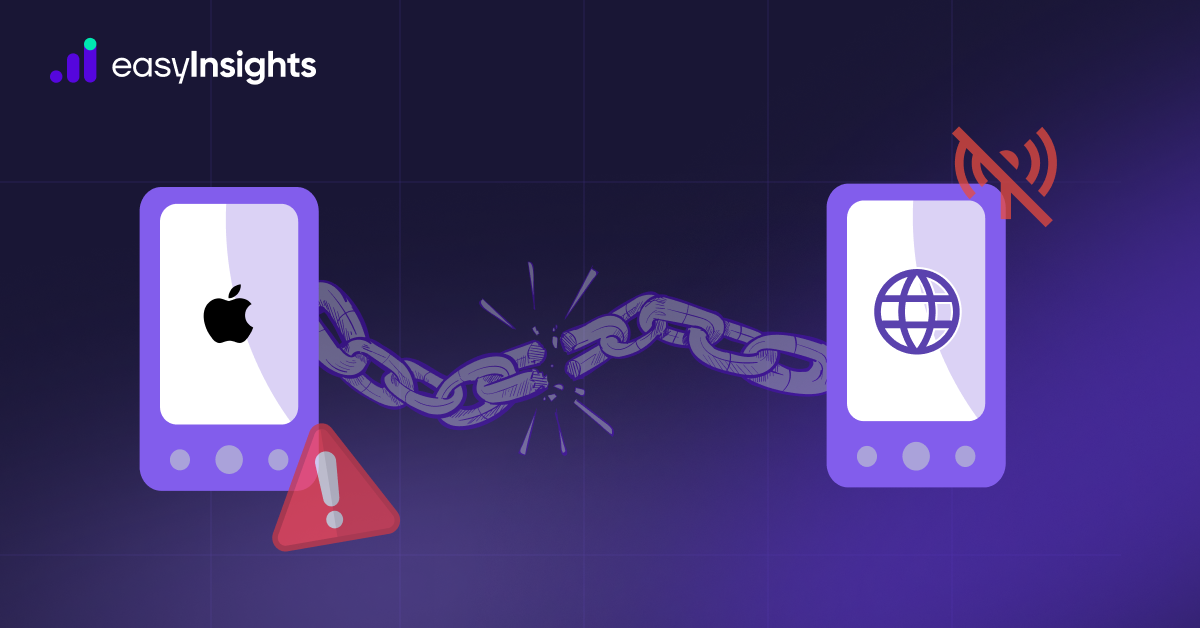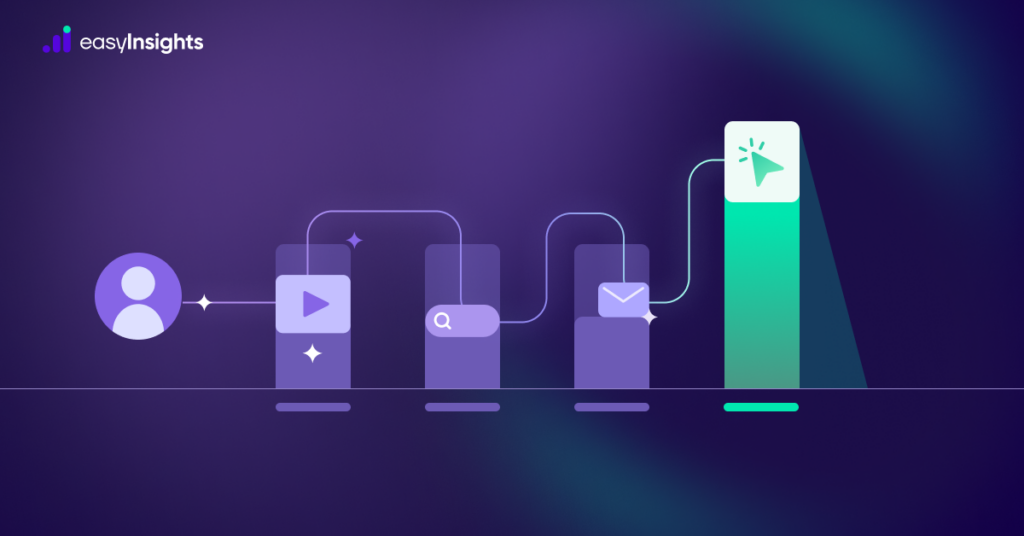
Attribution models are the backbone of modern digital marketing. They tell you which channels, campaigns, and touchpoints are driving conversions—helping you allocate budgets effectively. Among them, the Last-Click Attribution Model has been the most widely used, often considered the “OG” of attribution.
Until recently, most analytics platforms, including Universal Analytics, relied on last-click attribution as the default model. But with the transition to GA4, the rise of server-side tracking, and the decline of third-party cookies, marketers now need to revisit this model’s relevance in 2025.
In this guide, we’ll break down what last-click attribution is, how it works, its pros and cons, when it’s still useful, and what alternatives you should consider.
Jump ahead to:
What is the Last-Click Attribution Model?
The Last-Click Attribution Model assigns 100% of conversion credit to the final touchpoint that a customer interacted with before completing a purchase or conversion.
👉 Example scenario:
- A shopper clicks on a Facebook ad and visits your site but doesn’t purchase.
- Later, they search your brand on Google Ads and click again.
- Finally, they buy the product.
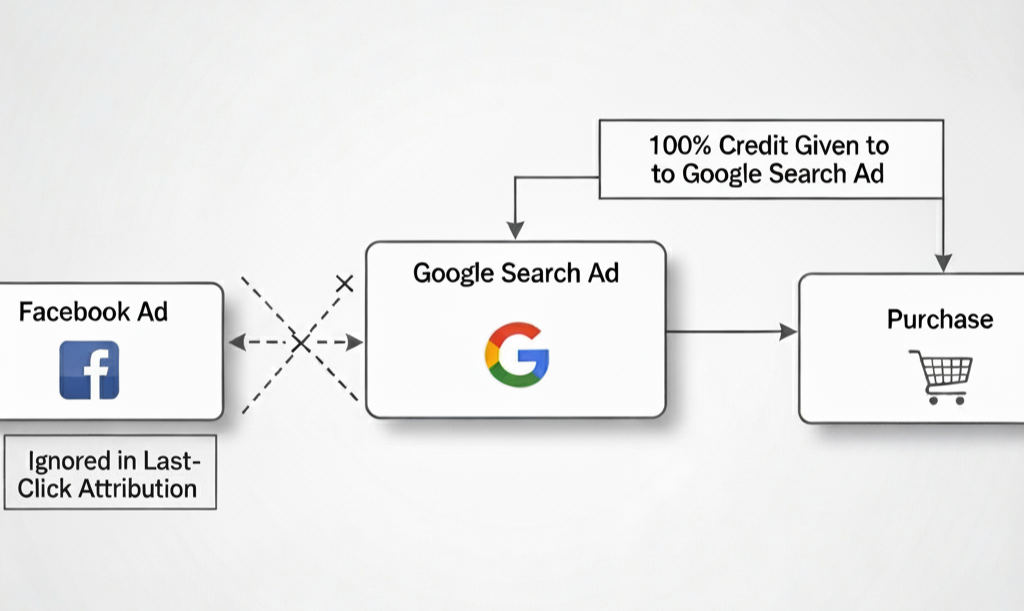
Under last-click attribution, Google Ads gets 100% credit for the conversion, even though the Facebook ad introduced the brand to the shopper.
How Does the Last-Click Attribution Model Work?
Here’s a step-by-step breakdown of how the Last-Click Attribution Model works:
- Customer Journey Tracking: All customer interactions with your marketing channels are tracked and recorded. These interactions could include clicks on ads, visits to your website, email opens, social media engagements, and more.
- Identification of the Last Touchpoint: Among all the recorded interactions, the last touchpoint before the conversion is identified. This could be the last ad clicked, the final email opened, or the last visit to your website.
- Credit Assignment: The model assigns 100% of the conversion credit to this last touchpoint. All previous interactions are disregarded in terms of attribution.
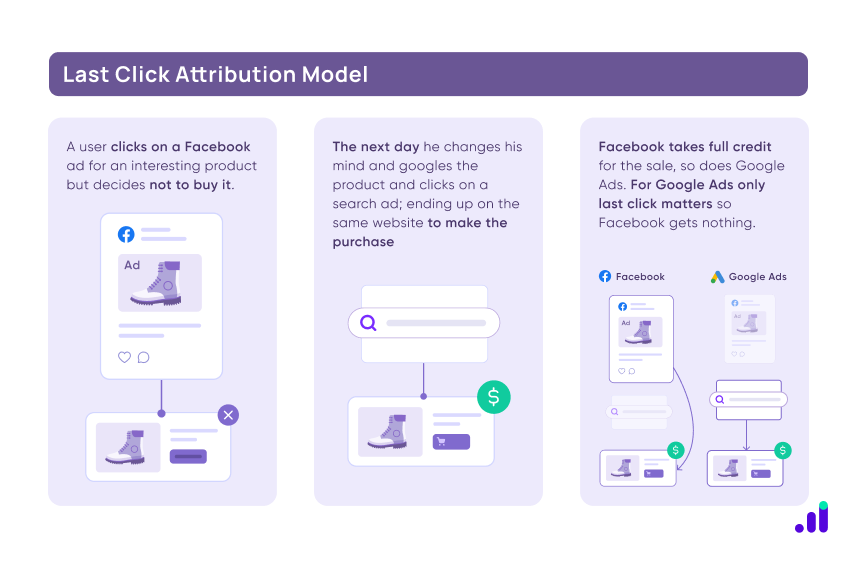
For example, if a customer discovers your product through a Facebook ad but decides not to buy it. Later the customer changes his mind and clicks on a Google search ad to make a purchase. Finally, once the item is purchased the Google search ad will get 100 percent credit for the purchase.
Advantages of the Last-Click Attribution Model
- Simplicity: The Last-Click model is easy to understand and implement as it doesn’t require a lot of data analysis or advanced tracking.
- Focus on Conversion: Marketers can identify which channels are best for driving conversions by focusing on the last interaction.
- Clear Results: It provides clear and definitive results, making it easier to measure the direct impact of specific marketing efforts.
- Widely Supported: Many analytics and advertising platforms, such as Google Analytics and Facebook Ads Manager, support last-click attribution by default, making it a convenient choice for marketers.
Disadvantages of the Last-Click Attribution Model
While it has merits, relying solely on last-click attribution creates blind spots:
- Ignores Early & Mid-Funnel Touchpoints
Awareness campaigns that introduce or nurture prospects get zero credit. - Leads to Budget Misallocation
Marketers may overfund “closing” channels like Google Search, while underfunding social, video, or display campaigns that build brand awareness. - Doesn’t Reflect Modern Customer Journeys
Today’s buyers interact across multiple devices, platforms, and channels before converting. Last-click oversimplifies this. - Becoming Obsolete in GA4
GA4’s default is data-driven attribution, and marketers who stick to last-click risk falling behind.

Best Practices for Using Last-Click Attribution in 2025
Although it’s outdated as a standalone model, last-click still has a place if used strategically.
- Use for Direct Response Campaigns
If the goal is an immediate action (like a flash sale or webinar signup), last-click helps identify the final trigger. - Complement with Multi-Touch Models
Compare last-click with first-click, linear, or DDA to get a holistic view. Tools like EasyInsights make cross-model comparisons seamless. - Regularly Audit Conversion Paths
Use GA4’s Path Exploration report to understand how multiple touchpoints contribute before the final click. - Treat as a Baseline, Not the Truth
Last-click attribution works as a “control view” against which you can benchmark other models.
When to Use the Last-Click Attribution Model
Last-click attribution offers a clear-cut answer to a crucial question: what drove that conversion? That being said, it can miss the broader narrative. Here are instances when the last click model may be beneficial and when you may need to explore other attribution models:
- Limited Resources: For marketing teams with limited resources or technical expertise, the simplicity of last-click attribution is a major perk. Data is readily available in most marketing platforms, requiring minimal setup and analysis. This makes it a user-friendly option for startups or businesses just getting started with attribution.
- Direct Response Campaigns or Flash Sales: Campaigns focused on driving immediate actions, such as sales promotions or time-sensitive offers, the Last-Click model can provide clear insights into what drove the final action. It is particularly effective for understanding the final push that led to a conversion.
- Complementary Analysis: By understanding the strengths and limitations of the Last-Click Attribution Model, marketers can better decide when and how to use it effectively. While it offers simplicity and clear insights into direct conversions, integrating it with broader attribution strategies ensures a more comprehensive understanding of the entire customer journey. This balanced approach can lead to more informed decision-making and optimized marketing efforts.
Alternatives to Last-Click Attribution
To address the limitations of last-click attribution, marketers often turn to other models that provide a more holistic view of the customer journey:
- First-Click Attribution: This gives all of the credit to the first click, regardless of the length of the conversion path, and whether or not that marketing campaign directly influenced the sale.
- Linear Attribution: This distributes credit for the conversion evenly across every click in a user’s journey.
- Time-Decay Attribution: According to this, the closer the click is to the conversion, the more credit it gets. This model uses a complex algorithm to distribute and attribute the credit to the useful interactions, taking note of the interactions or channels that were in the closest proximity of the conversion, and working backward. It lays more emphasis and assigns more and more credits as the interactions arrive at the conversion.
- Position-Based Attribution (U-Shaped): This assigns the maximum ( about 40%) of the credit to the first- and last-click and distributes the remaining 20% of credit points across the other ad clicks.
Also Read: Which Attribution Model should you be using for Google Ads
Enhance Your Attribution with EasyInsights
While most ad platforms focus only on how their own ads perform, EasyInsights takes a broader and more balanced approach.
Unlike platforms that give credit only within their own ecosystem (e.g., Google tracking only Google Ads or Meta tracking only Facebook/Instagram ads), EasyInsights shows how all your marketing efforts work together – including Google Ads, Meta, LinkedIn, SEO, email, influencers, direct visits, and even offline sales. This gives you a clear, unbiased picture of what’s truly driving results.
Key Features of EasyInsights
- Cross-Channel Visibility
Integrates data from all your marketing platforms, showing how every touchpoint-across ads, organic, and offline-contributes to conversions. - Server-Side Tracking
Collects first-party data for more reliable, accurate, and cookieless-ready attribution. - Unbiased Attribution Models
Unlike ad platforms that favor their own ads, EasyInsights applies attribution logic that reflects actual contribution. We support last-click, first-click, and multi-touch attribution for a fair view. - First-Party Data Focused
Built around your own data, EasyInsights ensures attribution is not only accurate but also privacy-compliant and tailored to your business needs.
To Conclude
While the last-click attribution model offers simplicity and clarity in identifying the direct driver of conversions, its reliance solely on the final interaction overlooks the broader narrative of the customer journey. Ultimately, a balanced approach to attribution leads to better insights, improved resource allocation, and enhanced marketing performance.
Amidst this need for a more comprehensive attribution model and the evolving digital landscape, future-proofing your marketing strategy is essential, especially with the phasing out of third-party cookies. EasyInsights offers a reliable solution for attribution challenges, leveraging server-side tracking to gather first-party data. This enables seamless navigation of digital complexities and unlocks valuable insights for growth.



